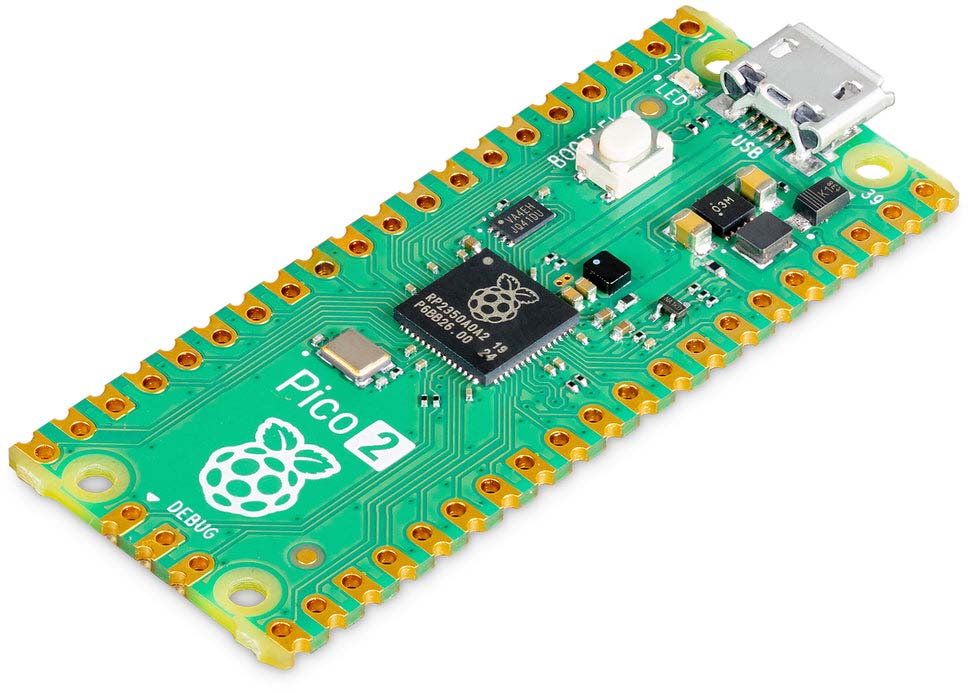Raspberry Pi have just announced an exciting new board, the Raspberry Pi Pico 2, a successor to the Raspberry Pi Pico:
It’s based on a new RP2350 processor with the following features:
-
Dual ARM Cortex-M33 or dual RISC-V Hazard3 processors @ 150MHz
-
520 KB on-chip SRAM; 4 MB on-board QSPI flash
-
26 multi-purpose GPIO pins, including 4 that can be used for ADC
-
2 × UARTs, 2 × SPI controllers, and 2 × I2C controllers
-
24 × PWM channels
-
1 × USB 1.1 controller and PHY, with host and device support
-
12 × PIO state machines
The presence of both ARM and RISC-V cores is an interesting development, meaning it could be possible to run both ARM and RISC-V machine code.
I hope to have a version of uLisp running on the board as soon as boards are available.
For more information see Raspberry Pi Pico 2.
The board is available for preorder in the UK from The Pi Hut: Raspberry Pi Pico 2.

